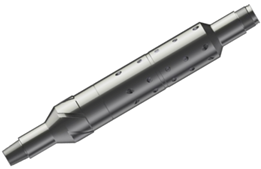
A major North Sea Operator was drilling a new development well through challenging formations.
With no experience or knowledge of what PWC® has to offer, HydraWell introduced the technology and explained in depth the suitability for well barrier remediation and how the system is an ideal solution for high inclination wells.
AT A GLANCE
Location: North Sea, UKCS
When: 2015
Scope: Remediate wellbore to allow continuiation of well
CLIENT CHALLENGE
After drilling to TD in the 12-1/4" section, the bit stopped at approximately 19,500 ft. Circulation through the shoe and up the annulus was required to ensure sufficient cement barrier at the production casing prior to drilling into the reservoir, however no circulation was gained.
A port collar had been installed at 11,000 ft, but the stage cement job revealed approximately 20% returns and the subsequent cement bond log revealed poor cement isolation.
An attempt to circulate cement from the shoe and up to new perforations at 15,000 ft failed, and a new Well Barrier Element (WBE) had to be installed shallower than 18,300 ft – if not the wellbore was lost and a new 12-1/4" hole with the subsequent casing running had to be performed.
BACKGROUND
A major North Sea Operator was drilling a new development well through challenging formations. With no experience or knowledge of what PWC® has to offer, the HydraWell team introduced the technology and explained in depth the suitability for well barrier remediation, and in this case how the system is an ideal solution for high inclination wells.
This was a new client, in a new market geography, therefore HydraWell spent significant time sharing experiences and understanding the client challenges to build confidence in our team as well as our patented PWC® technologies to ensure a successful operation.
HYDRAWELL SOLUTION
HydraWell´s proprietary jet-washing HydraHemera™ technology was used to overcome circulation challenges to ensure sufficient cement coverage to continue with the existing wellbore.
A 120 ft interval was perforated with high shot density perforating guns to allow for maximum fluid displacement to the annulus during washing and cementing.
First a FAS Drill (drillable) bridge plug was run and set as base for the cement. The well was then perforated at ± 17,200 ft and TCP guns retrieved.
HydraWell´s HydraHemera™ jet-washing technology was run and the annulus opposite the perforations, sitting at 81 degrees was sufficiently cleaned. This process involves continuous rotation of the jet-washing tool while high-pressure cleaning the annulus, displacing debris, barite and other movable particles from the annulus, with a fresh and new wash fluid.
The cement was then pumped down the string and jetted with high energy for appropriate displacement of the annular wash fluid. The HydraWell BHA was rotated as the annulus was jetted with cement from the bottom perforation to the top perforation leaving a uniform, homogenous cement plug in the cross-section. The HydraHemera™ BHA was then pulled out of hole while the cement was curing.

RESULTS & BENEFITS
The subsequent logging run showed full hydraulic isolation across the perforated intervals, achieving the required barrier, allowing the Operator to continue with their programme of work. It is estimated our PWC® solution saved around three weeks rig time, avoided ± 20,000 ft of casing to be re-run, as well as mitigating the risk of not achieving suitable annular cement again.
By Erlend Engelsgjerd
KeyFacts Energy Industry Directory: HydraWell
If your company would like to feature a Case Study in KeyFacts EEnergy, contact us for more details
 KEYFACT Energy
KEYFACT Energy